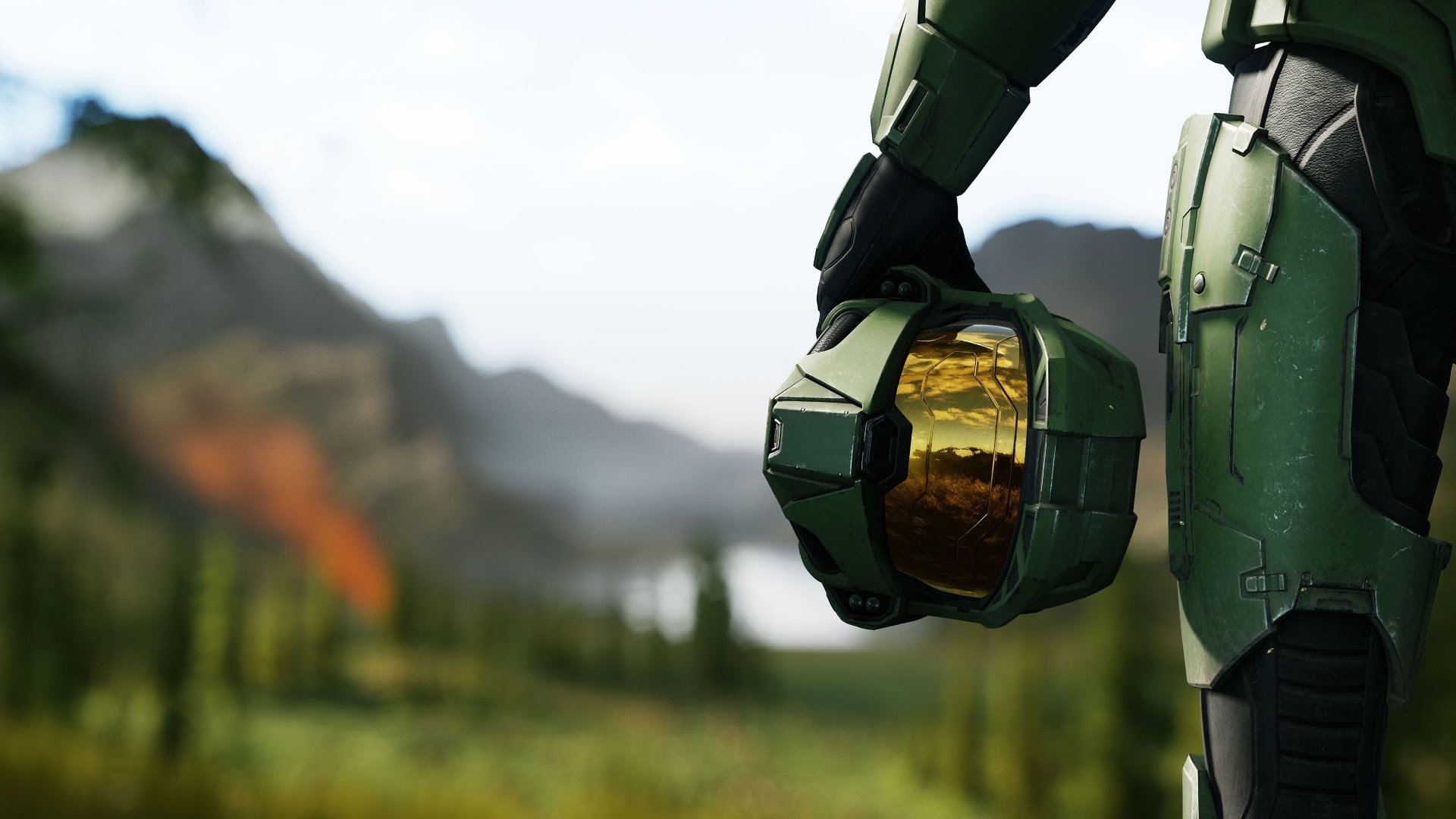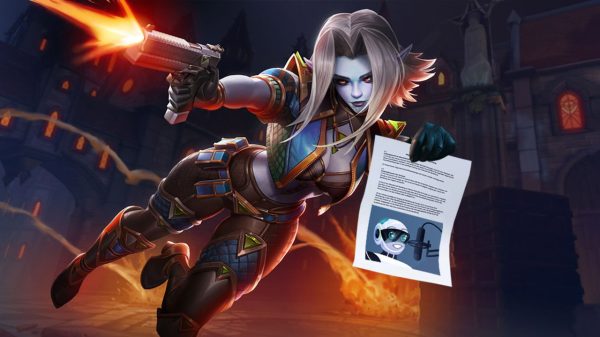In the year of our Lord 2021, there’s a bit of Halo fever in the air. It’s palpable. The surprise drop of the superb free-to-play multiplayer portion of Halo Infinite had hundreds of thousands of players flocking to the title that was a certified palette cleanser to the likes of Call of Duty and Battlefield. But the enduring legacy of Halo is anchored in the rich lore of its universe, and many have been patiently waiting to see if 343i can truly capture the essence of what Bungie created just over two decades ago in the campaign department. Infinite’s campaign tries a lot of things and is generally successful in its attempts, but some uneven storytelling and open-world design oddities make this continuation of the Reclaimer Saga perhaps not the triumph it might have been, but a worthy addition nonetheless.
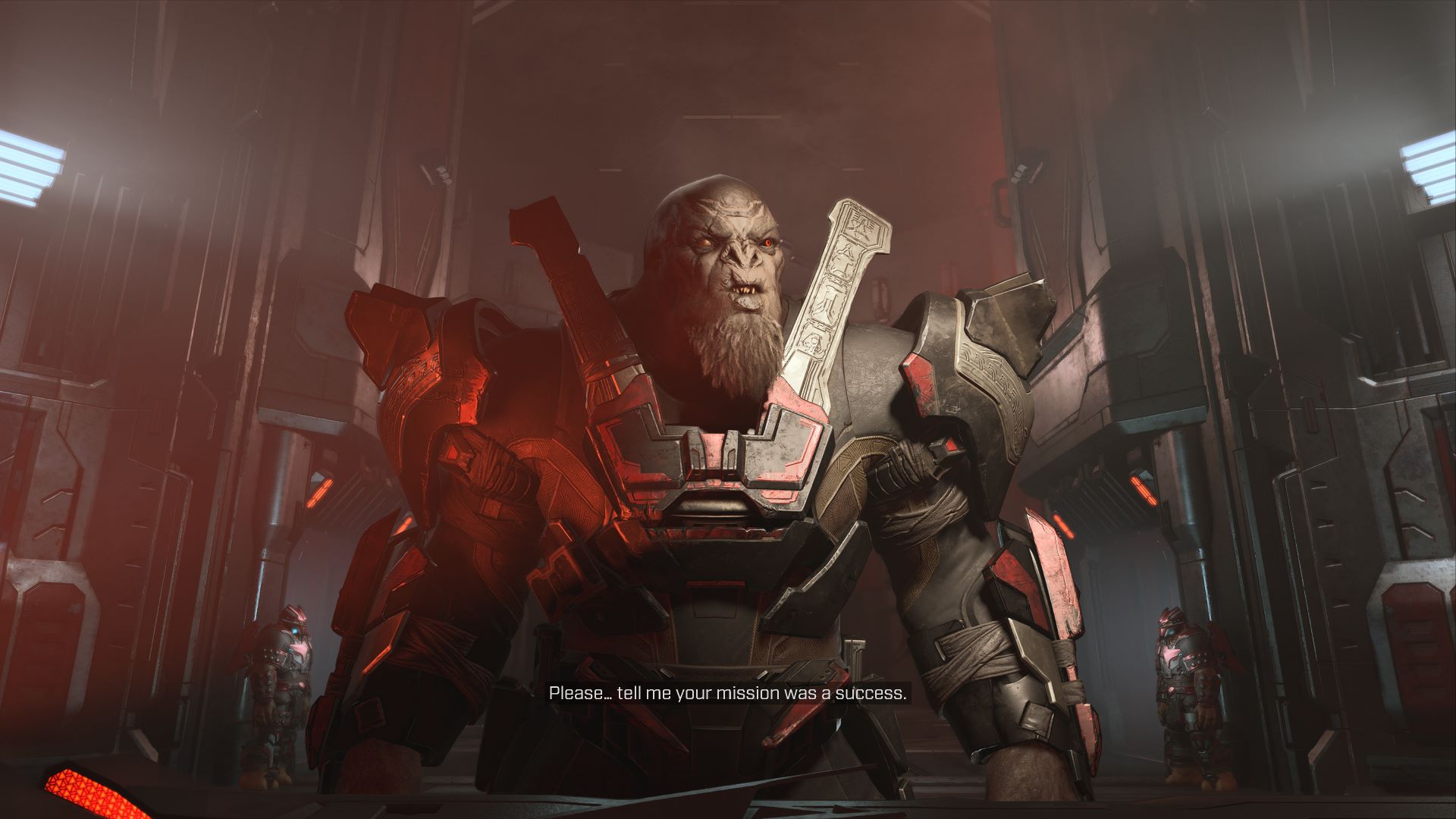
Read on to find out
Campaign
With an opening cinematic showing our favourite space man getting his arse summarily handed to him on the UNSC Infinity by Atriox, and then promptly hurled into the cold depths of space, there’s an immediate sense of desperation. There’s also an immediate sense that if you haven’t played RTS-spinoff Halo Wars 2 you’re going to be a little lost. The game assumes a lot of familiarity with Atriox and his faction called The Banished, and the whole thing is absolutely crying out for a primer on who they are and what has taken place in the twisty-turny labyrinthine narrative of the Reclaimer Saga. Given the last Halo game I played was Halo 5: Guardians some six years ago, I definitely had to do some reading on the story to date, and unless you’ve mainlined Halo lore for the past decade (including reading all of Jordan Garcia’s saucy fan fics), you’ll most certainly want to reacquaint yourself with the overarching universe if you want to glean satisfaction from the game’s narrative. Perhaps this is to be expected seeing as it is part of a larger saga, but be warned that the narrative makes no attempt to explain its origins.
After his lopsided donnybrook with Atriox, Spartan 117 spends a lot of time floating in space before he’s picked up and rebooted by a lone Pelican pilot, who informs Master Chief that humanity has lost its struggle against the Banished, and the war-obsessed faction have wrested control of Zeta Halo. Like all Halo installations they’re essentially super weapons capable of destroying all sentient life, so having it in the paws of the Banished, now led by the brute Escharum (who has a guttural voice so low he may actually be the front man of Cannibal Corpse), is not good. But with humanity on its knees and the fate of the universe hanging in the balance, rather than turn tail and lick his wounds, Master Chief compels the pilot to take him to Zeta Halo so he can continue the battle.
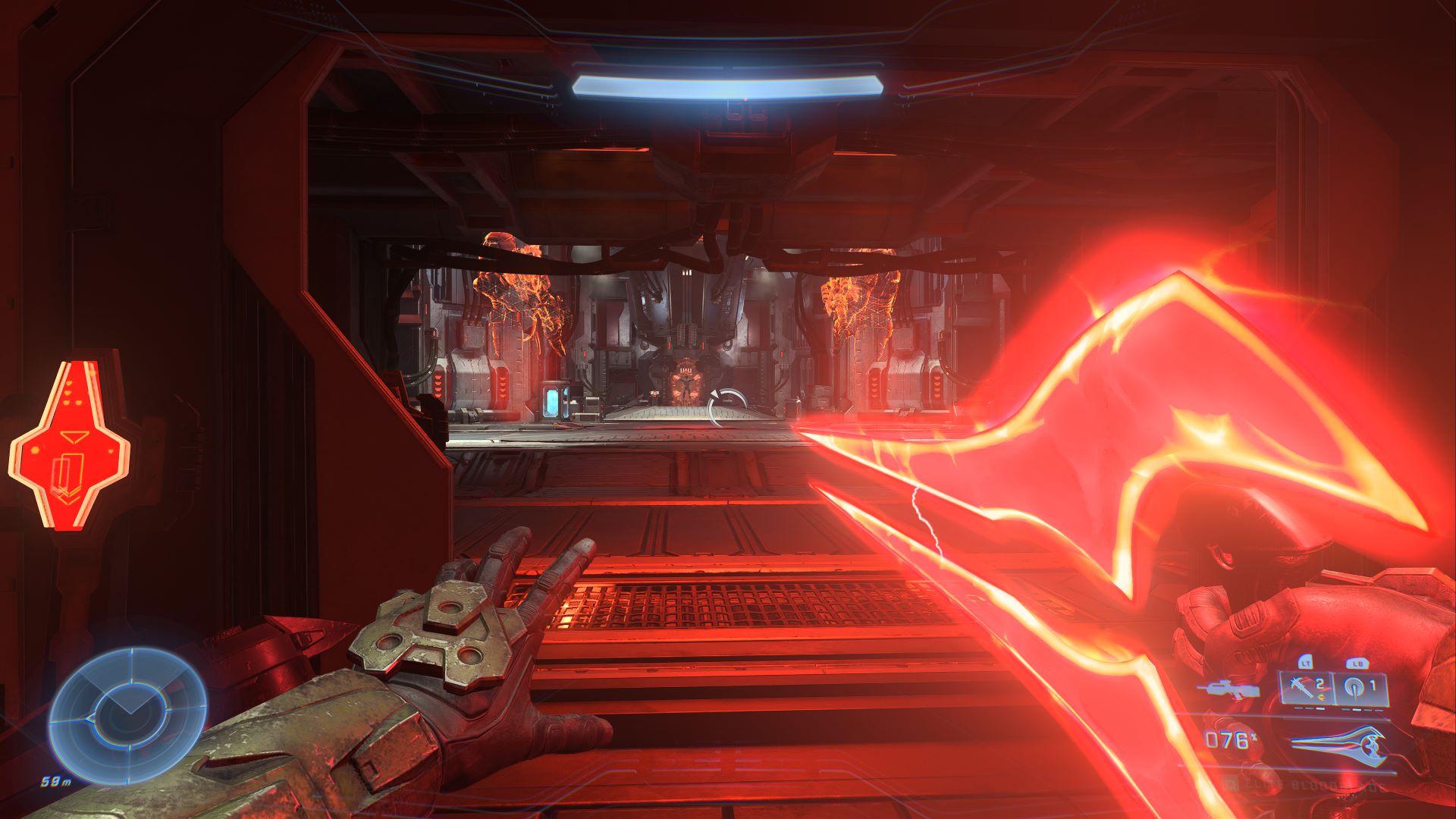
The Glowing Red Energy Sword of Peace and Friendship
It’s a relatively simple story at the heart of it, but things become infinitely more complex as we try and piece together the fate of our old friend turned megalomaniacal villain Cortana, and the consequences of what she’s been up to. One of my favourite aspects of Halo 4 was the fact that it was largely a weird love story between Master Chief and Cortana. The hardened veteran robbed of his childhood to be trained body and soul as a super soldier and the AI spawned from the formidable intellect of one of the smartest people in the universe have a deep bond that’s evolved over many games, and their deteriorating relationship as the Reclaimer Saga wears on is still one of my favourite pillars of the Halo metastory. I think I would have liked for Cortana to have a more front and centre presence, as during the game she is relegated to cryptic sporadic sequences requiring you to connect all the dots, and it’ll be interesting to see fans’ reactions to her depiction and fate in Infinite.
Cortana’s background lurking is obviously by design, as 343i want to focus player’s attention on a brand-new female AI to fall in love with, who is given the curious name of Weapon. She is an infiltration program designed to lock down Cortana for deletion, with a bubbly and endearing personality that is immediately infectious. In the back of my mind I wonder if Weapon’s design appeals a little too heavily to male fantasy (as a male my objectivity is obscured somewhat), but her naivety, young innocence and exuberant nature make her incredibly likeable (that smile, that goddamn smile). Some of my favourite moments in Infinite were between her and Master Chief, with the latter obviously wrestling with trust issues given his past experiences with hyper-intelligent AIs. Crafting strong interpersonal relationships is something I think 343i has excelled at while helming the franchise, but they do a far lesser job of it with the Pelican pilot. He is obviously someone we are supposed to care about, but he isn’t even given a name until the game’s twilight. He’s an odd piece of the narrative that doesn’t really fit in my opinion, but all indications are that he’s in it for the long haul, so perhaps future iterations will flesh him out.
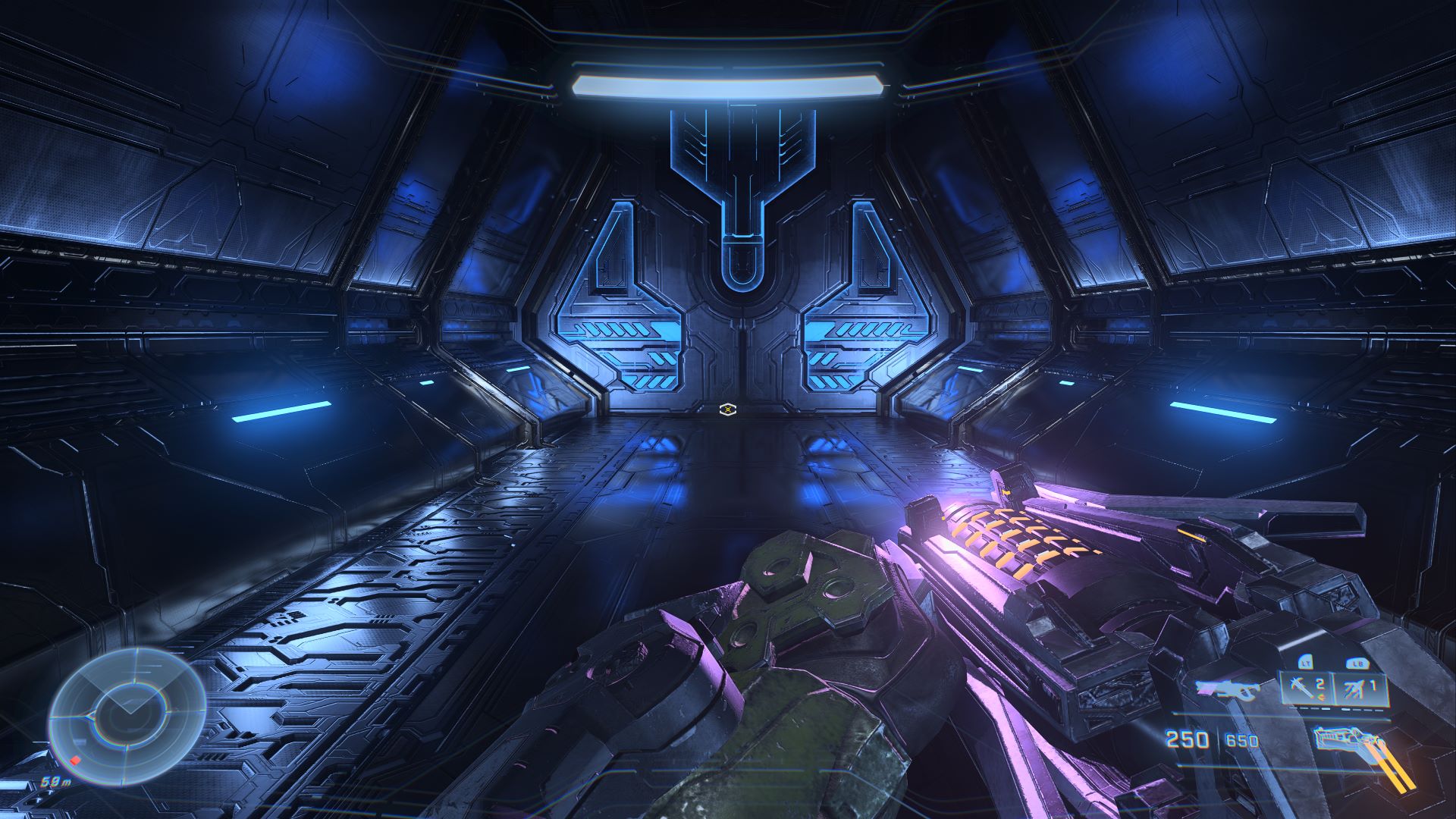
You know the graphics are good when you’re taking screenshots of sexy doors
Infinite clearly wants to take us back to the franchise’s beginnings. From the introduction to a new AI, to Zeta Halo’s more than passing resemblance to the first ring we encountered all those years ago, Infinite hearkens back to its roots.
Infinite clearly wants to take us back to the franchise’s beginnings. From the introduction to a new AI, to Zeta Halo’s more than passing resemblance to the first ring we encountered all those years ago, Infinite hearkens back to its roots. This is also reflected in the visuals, a great bone of contention for keyboard warriors across the internet when the campaign gameplay was first shown off. Whether or not the final product will appease Craig meme enthusiasts, I think it is nothing short of amazing. With not a dull grey and brown surface in sight, the simple, clean detail of the environments pops with vibrant colour, from the lush natural foliage to the cerulean lakes. Forerunner installations feature incredibly vast architecture befitting of their creators, characterised by menacingly cool purples and blues, whereas the Banished are often framed in malevolent red. I never tired of looking at Halo Infinite, and I wouldn’t be surprised if 4K screenshots started physically pouring out of my Xbox Series X given the sheer volume I took. I will say that the game does suffer from a certain lack of environment diversity though. There are only a few different types of environments that you’ll encounter and an overt sense of familiarity can start to set in. Both the open world and linear sections could have done with a few different biomes to break things up, but in general I think the art direction is bold, strong and confident.
The open-world trend is so entrenched in modern game design that it’s hard to remember exactly where it all began. Aside from classic open-world RPGs like Morrowind, I can still remember the thrill of scouring Assassin Creed 2’s sprawling maps and climbing Far Cry 3’s radio towers in order to reveal points of interest and tick off the games’ multitudinous checklists. Many Ubisoft games later and open-world design has lost a lot of its sheen; it is by far the most battered, abused and fatigued tool in a modern developer’s arsenal. Empty checklists and gigantic maps do very little to impress – the exact opposite in fact. So when the Halo franchise – a traditionally very linear series – decides to implement such a design, I immediately wondered whether it would be a natural fit, or simply represent kowtowing to the lowest common denominator of modern gaming design. The good news is that this isn’t simply Halo unceremoniously shoehorned into an open world. It fits. It makes sense. Mixed in with some light RPG mechanics, it’s fun. The bad news is that by design a lot of the open world stuff is kind of superfluous, and is basically turfed into a ditch in the latter half of the game.

Thank you for your service, Craig
Zeta Halo isn’t exactly the largest open world you’ve ever encountered, but there are plenty of things to see and discover on its surface. While you can simply make a beeline for campaign missions, the game compels you to explore the expanse and re-establish dozens of Forward Operating Bases (FOBs). Liberating these small bases will reveal nearby points of interest and give you access to vehicles and weapons you can summon at a whim, with the fancier stuff being unlocked using a currency called Valor. Valor is earned by doing small side missions or helping out pockets of stranded marines, and with enough if it you’ll go from dropping basic assault rifles and useless Mongooses (Mongeese?) to rocket launchers and Scorpion tanks. It’s a cool idea that works well and incentivises doing activities that earn you Valor, but I do wish my favourite loadouts were remembered at a FOB (the classic battle rifle and sniper rifle combo), rather than having to cycle through and select them each time.
Other activities in the open world include hunting down armour and vehicle cosmetics for use in multiplayer (a fantastic alternative to the grindy free-to-play offerings), and tracking down and killing High-Value Targets (HVTs). HVTs are not only fun (and often challenging) to hunt down, they’ll also net you a unique variant of a weapon that can then be summoned at any point at a FOB. Weapons like a rapid fire plasma pistol or homing rocket launcher are very fun to play around with, and these miniboss fights were some of my favourites. Minibosses are actually spread throughout the campaign too and are similarly tense and sometimes rely on unique mechanics. You know it’s about to go down when an enemy has a visually represented health bar, and I don’t recall one of these fights that I didn’t like. Talking about enemies, the variety is quite good but there are too few new enemies. The enemy combos are all well crafted, as is tradition for the Halo series, but I felt like I was murdering the same grunts, brutes, elites and jackals quite a few times over.
Also incentivising exploration of Zeta Halo’s nooks and crannies is the introduction of RPG-lite mechanics, which allow you to upgrade your base shield capacity (essential) and a handful of abilities. Chief among these abilities is the grappling hook, which is a fantastic complement to your arsenal, allow you to traverse environments with ease, escape from danger, or throw yourself headlong into danger. Upgrade it and you can temporarily shock enemies when you grapple them and deal a shock punch to them that also affects surrounding enemies. In short: you want this. Other abilities such as a threat tracker which is useful for cloaked enemies and a drop wall which acts as deployable cover are decidedly less exciting, but their final upgrades make them a little more tantalising. Upgrades will cost you Spartan Cores which you’ll find strewn about the map, and their locations can be revealed by liberating FOBs. Switching between abilities is a little awkward, requiring a right tap of the D-pad and then another tap on either four directions to choose a new ability. It would have been much smarter to simply have the abilities tied directly to a D-pad press, and perhaps giving the grappling hook its own button given how central and awesome it is. I found myself largely ignoring the other abilities because it wasn’t worth the hassle and I always wanted my grappling hook handy.
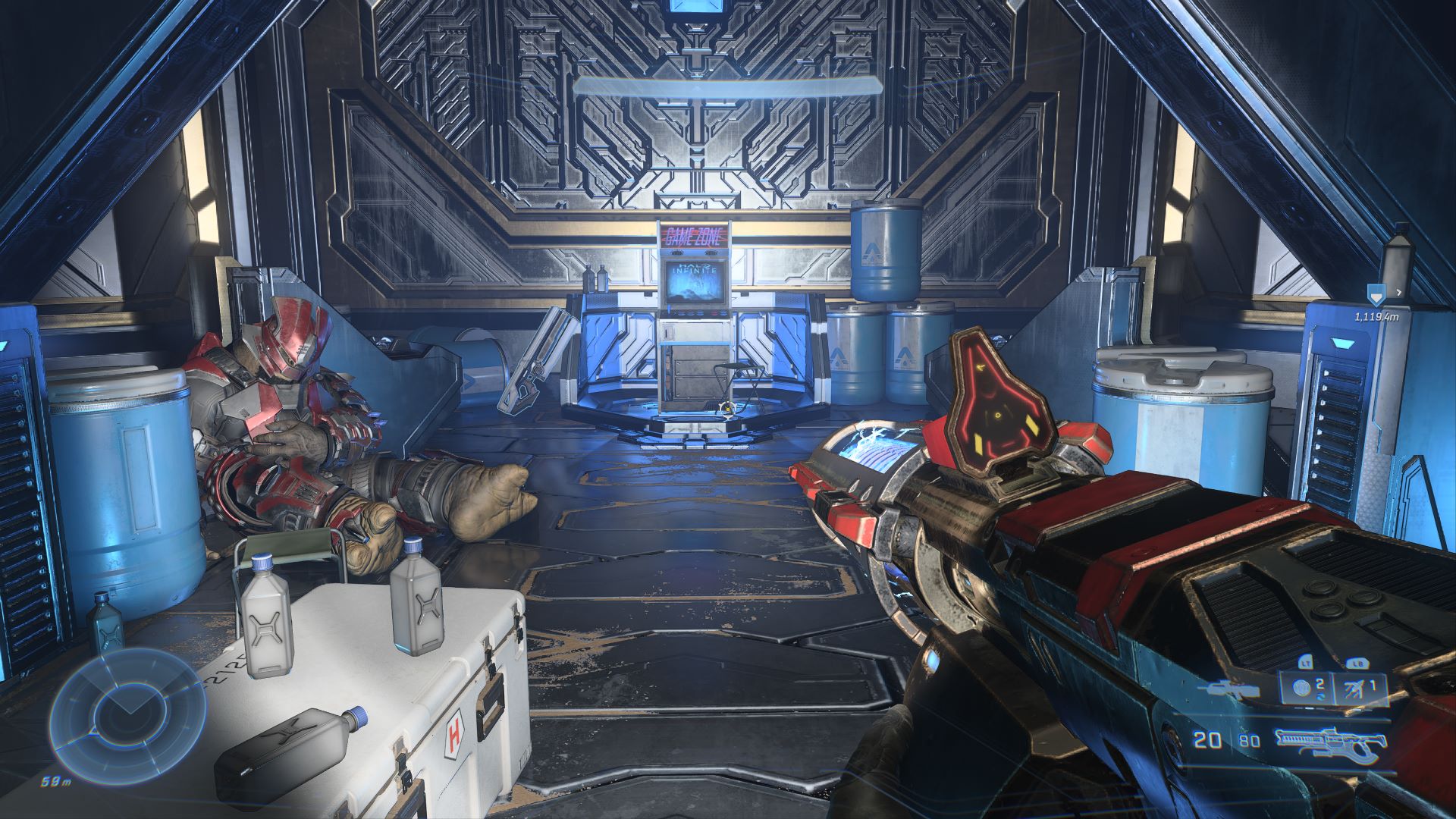
What happened here?
The good news is that this isn’t simply Halo unceremoniously shoehorned into an open world. It fits. It makes sense. Mixed in with some light RPG mechanics, it’s fun.
So the open world stuff is fun, but its actual importance to the campaign is unfortunately minimal, and you could completely skip it and not be any worse off. The campaign itself is extremely short too, meaning if you don’t feel like investing yourself in the open world you’re not getting a lot of bang for your buck. The problem is that outside of the shield and perhaps grappling hook upgrades, nothing else is really essential for success. Weapon variants from HVTs are great, but hardly game changers, and while I loved calling down Scorpion tanks and they are very useful in the open world for clearing FOBs and the like, they are rendered superfluous in campaign missions that often put you in interior sections. Halo Infinite is caught in an odd spot where it wants to have RPG mechanics and an open world, but also doesn’t want to gate you off from certain sections with difficulty spikes requiring a specific arsenal or ability set. The carrot on the stick is wholly optional, which is at odds with conventional open-world design.
Multiplayer
I was lambasted from pillar to post when I defended Halo Infinite’s graphical fidelity after its first meaty gameplay showing, with my main point being that the clean, pared back textures and bold colours were perfect for multiplayer. I’ve had enough of chasing brown and green soldiers through cluttered brown and green environments, the time of red versus blue is overdue. And I was right. Just like the campaign, the visuals perfectly suit the multiplayer vibe to a tee, taking me back to the glory days of the original trilogy, and the gameplay feels like it simultaneously respects its roots while updating itself for modern tastes. It’s unfortunate that one of those modern tastes is a bitter, acrid pill that is difficult to swallow, with the superficially generous free-to-play multiplayer hiding beneath its benevolent glow a predatory insistence on grindy progression and avaricious microtransactions.
While Infinite’s multiplayer gameplay feels very similar to Halo 5’s, there’s a refined feeling about it that is utterly infectious. As a middle-aged father of two who works full time, I often stare longingly at my games, knowing that I can either give them the attention they need and dip into my sleep budget, or quietly sigh and tell them I’ll play them tomorrow. Halo Infinite gave me no such choice, demanding I play it to ludicrous hours of the night and early morning, with the allure of ‘just one more game’ simply too strong to ignore. The teamwork, the tactics, the slower pace encouraging cunning and skill over lightning reflexes, it all just speaks to the sort of competitive gamer I’ve become after spending so long answering the annual Call of Duty. Not to take away from that series, these are very different beasts after all, but Infinite feels like it was simply made for me in so many ways. I have felt my Halo skills of yesteryear return, and it feels good.
Between the smaller 4 v 4 Arena or expansive 12 v 12 Big Team Battle modes, matches don’t exactly mix up any sort of formula, featuring the usual suspects like Slayer, Strongholds, Oddball and Capture the Flag, but there’s not a single mode that I don’t like. No combination of map and mode made me roll my eyes and pray for it to be over before it began, with each having their nuances to master with a fresh group of random teammates, and so many amazing lead swings and clutch moments typify the experience. While wholly functional, I wouldn’t say maps have an overly distinct visual feel, and I kind of wish they’d drawn more heavily from the campaign (particularly the Foreunner installations), but their layouts are all thoughtfully crafted to be easily readable and they flow naturally.
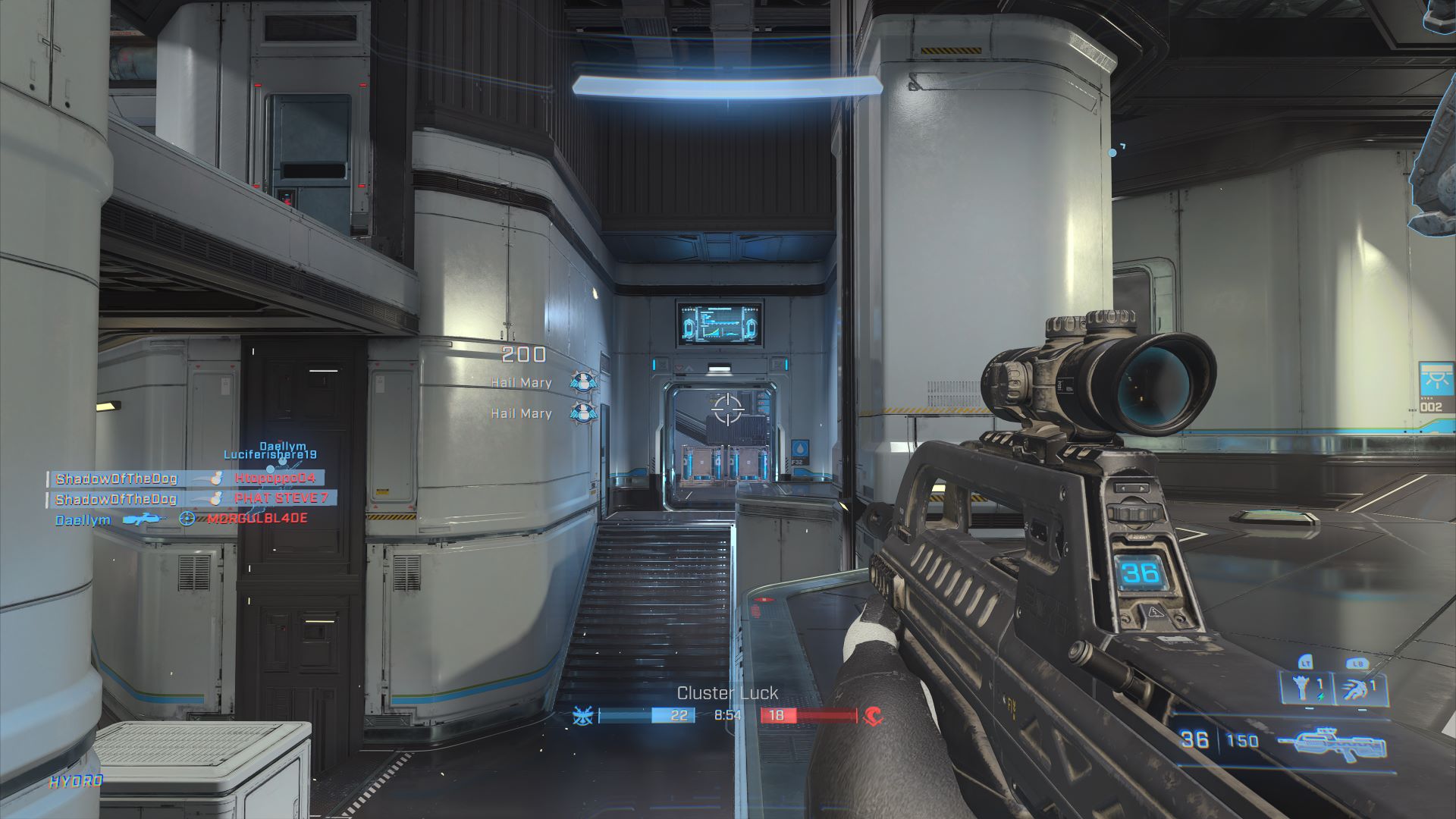
Hail Mary, full of grace
Weapon diversity has been given a bit of a shot in the arm, however it feels like 343i were a bit timid when it came to balancing some of the weapons, because there are quite a few that are – to put it mildly – useless. You begin matches with the iconic assault rifle and a rapid fire pistol sidearm, and this combo is simply deadly in the right hands at anywhere from short to mid-long range. It makes the slow-firing high-recoil Commando rifle almost obsolete in most situations, and other pistols like the Disruptor (which does shock damage over time) and the Mangler (a magnum-style brute revolver with extra melee damage) just don’t hold a candle to the guns you start with. The Ravager, which shoots plasma and can be charged to create lasting plasma puddles that damage enemies, is simply a liability to use in most gunfights (it can sometimes be useful for locking down objectives but it’s a niche use). The Heatwave sounds cool on paper as a type of shotgun that shoots hard light, but its toggleable vertical or horizontal spread feels awkward at most ranges. The Plasma Carbine deserves a special mention for just how awful it is, and if this weapon is all you’ve got in your hands then you may as well lay down and present yourself for imminent teabagging.
Of course, it’s all about the power weapons such as the rocket launcher, sniper rifle and a cool gun known as the Cindershot, which is essentially a hard light grenade launcher that can absolutely devastate an entire enemy team. These power weapons spawn periodically on a timer and can be crucial in key moments. Also entering the power weapon arena is the Skewer, a brute harpoon launcher that will kill an enemy Spartan in one hit anywhere on the body from any range. Its raw power is counterbalanced by the hefty amount of skill it takes to land the slower-firing projectile, and the reload time is enormous. It also makes mincemeat out of vehicles, which are tantalisingly large juicy targets for anyone holding a Skewer. It’s not quite as awesome as the Spartan Laser, but smoking an enemy vehicle from across the map never stops being satisfying.
So there’s a lot to love about Infinite’s multiplayer, but it’s time to address the elephant in the arena, but first you’ll have to pay me $13 and even then I’ll drip feed my opinion to you. I am of course talking about the Battle Pass system, something I’ve long considered a scourge on gaming but have never cared enough about it to get too irate. But with my beloved Halo going the free-to-play route, the stingy progression system that features prominently hurts just a little. I suppose I should be grateful that the core game is 100% free, and the core game is excellent, but modern multiplayer FPS titles rely on rewarding performance and giving a sense of progression, and Infinite kind of missed the memo on that one. The only way to level up and gain access to new cosmetics is to complete specific challenges, and there is currently zero incentive to actually perform well in a match. You may have captured all three flags and gotten five Killtaculars in the process, but you’ll only ever get a rote amount of XP. Thankfully, the amount you receive has been increased significantly since launch, from a miserly 50 XP (to put this in perspective and each level takes 1000 XP), to between 300 and 100 XP depending on how many games you’ve played that day. This is a positive response to some hefty criticism, and means you don’t have to get as hung up on the moderately terrible weekly challenges (more on these in a bit).
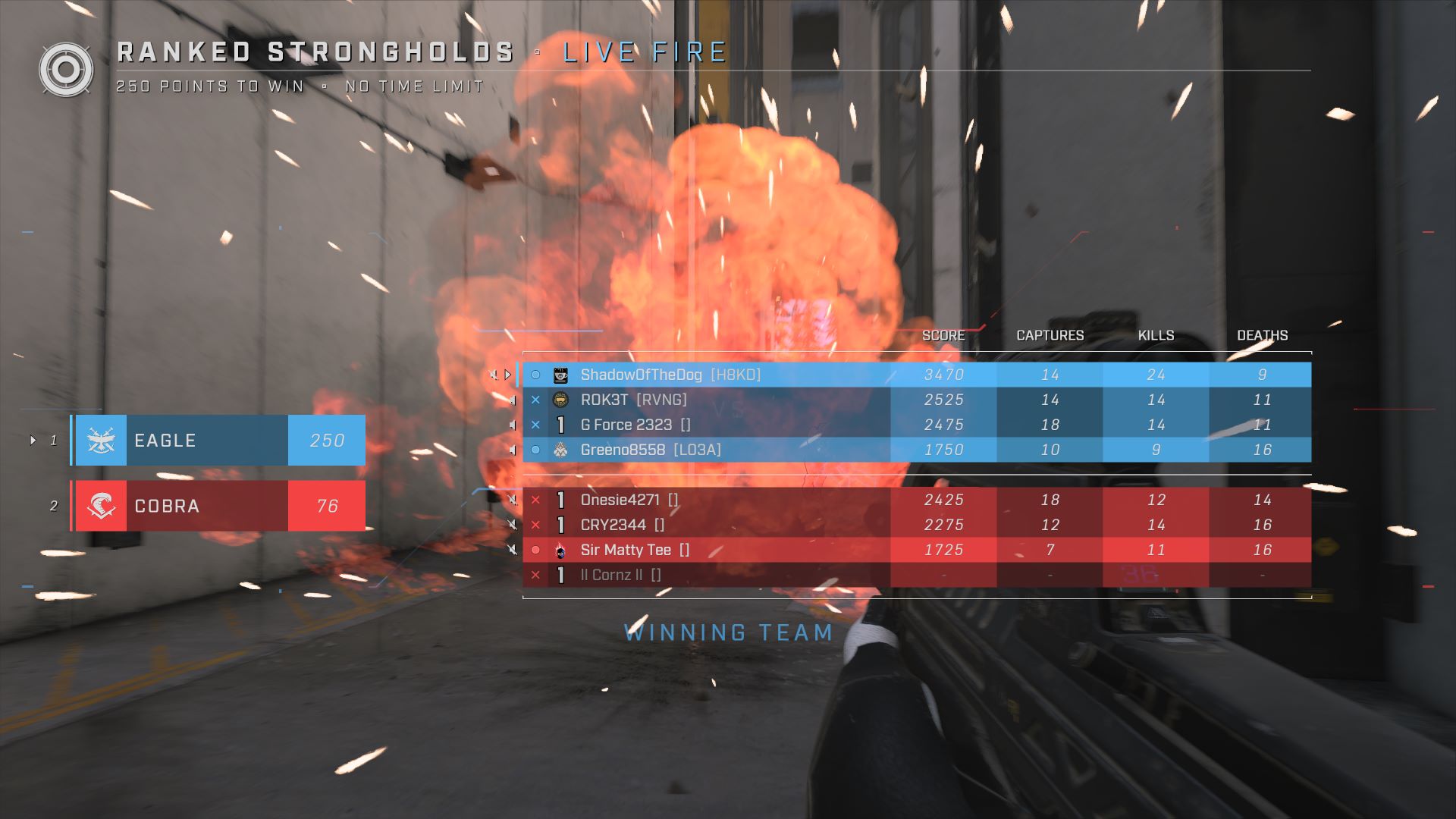
Still got it
The teamwork, the tactics, the slower pace encouraging cunning and skill over lightning reflexes, it all just speaks to the sort of competitive gamer I’ve become after spending so long answering the annual Call of Duty.
Even though the speed of levelling up has increased significantly, the rewards are doled out in such parsimonious portions that you’ll feel like an emboldened Oliver Twist asking for just a little more. You might get a right shoulder piece one level, and have to wait a further two levels to get the left one. It’s madness. This is made worse by the fact that certain armour pieces are only available for certain armour cores, not allowing you to mix and match and create the Frankensteinian Spartan monstrosity of your dreams. 95% of the cosmetics and 100% of the good ones are also locked behind a paywall, so playing Barbie with your shooty man is only possible if you fork out a bit of hard-earned.
The Battle Pass will set you back about A$13, and I’ve lost count of the amounts of times I’ve reached for my credit card with my sweaty mitts after unlocking a new Battle Pass level and wanting to equip some cool new gear – but then I see the slow drip feed of meaningful rewards, and the weekly challenges I have to do to even get a glimpse, and the whole thing remains severely unpalatable. Challenges may seem innocent on the surface, but are sometimes frustrating to complete and often antithetical to the Halo ethos. A challenge might be simply to play a single match of Stronghold, but with no control over the rotation you could play twenty matches and not play that mode. Sometimes it might be a specific weapon kill challenge, where instead of helping out your team you’re busy trying to find that useless Disruptor pistol somewhere on the map to get five kills with it. You might also have to hijack a vehicle with the grappling hook (which is just as awesome in multiplayer as it is in the single player), which is fine, but again often takes the focus off the game at hand. You can sense when a team is trying to complete random challenges rather than play the actual fucking game, and if this isn’t the poster child for a multiplayer title shooting itself in the foot (basically with a Skewer), then I don’t know what is. It’s clear 343i are listening with the changes they’ve already made post-launch, but the whole system needs further tinkering. Rewards need to come from match performance and not just silly challenges, and the amount and quality of items you get from levelling up needs to be increased. My opinion on this is far from unique either, and 343i would do well to keep on listening and create a far more attractive carrot on a stick if they want to be in it for the long haul.
Final Thoughts
Halo Infinite’s campaign is a love letter to the Halo games of yore in its beautiful art direction and re-introduction of a loveable AI, but it also represents a title that wants to forge forward with a new direction. The narrative takes a little while to heat up and at times lacks cohesion, but is anchored by interesting character interactions and a handful of impactful moments. I’m not sure fans will be completely on board with some of the narrative choices, but it’s at least a new horizon for Master Chief and friends. I like the incorporation of open-world elements into the franchise, but its integration with the meat and potatoes of the campaign never really feels like it’s there. The free-to-play multiplayer is phenomenal in terms of quality, depth and fun factor, and if 343i could get out of their own way and revamp the rewards system then you’d very possibly have a title capable of toppling some of the FPS scene juggernauts. It’s so close to winning over hearts and minds, if only it wasn’t simultaneously wrangling with wallets. Halo Infinite is a good shakeup for the franchise and proof that 343i wants to move with the times and evolve the franchise for modern sensibilities, and even if all the moving parts don’t form the most well oiled machine, it still feels like a step in the right direction.
Reviewed on Xbox Series X // Review copy supplied by publisher
Click here for more information on WellPlayed’s review policy and ethics

- 343 Industries
- Xbox Game Studios
- Xbox Series X&S / Xbox One / PC
- December 8, 2021



Kieran is a consummate troll and outspoken detractor of the Uncharted series. He once fought a bear in the Alaskan wilderness while on a spirit quest and has a PhD in organic synthetic chemistry XBL: Shadow0fTheDog PSN: H8_Kill_Destroy





